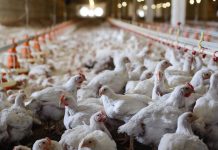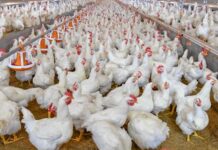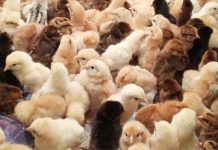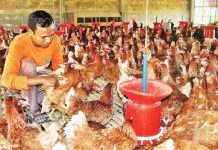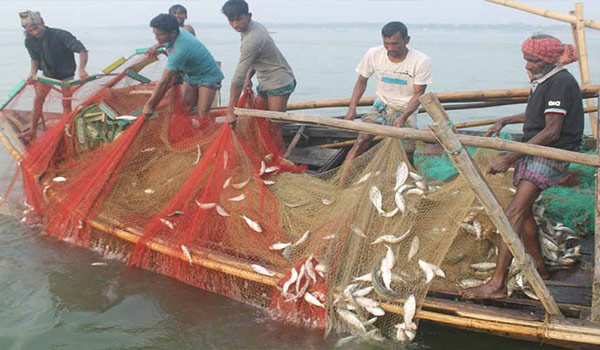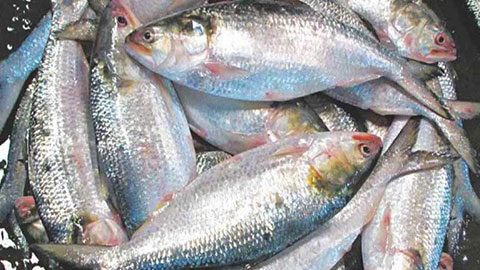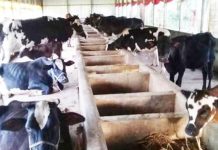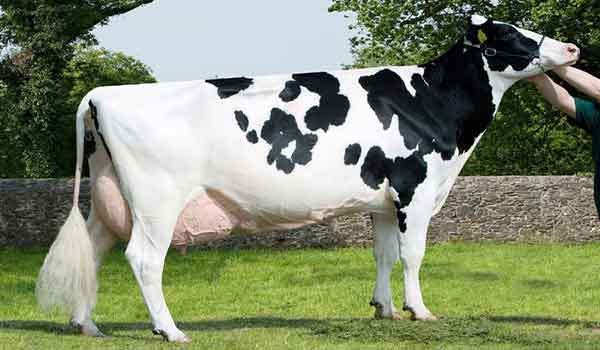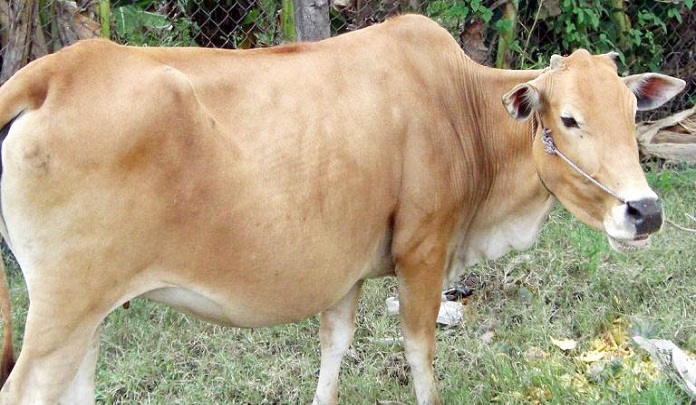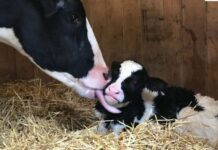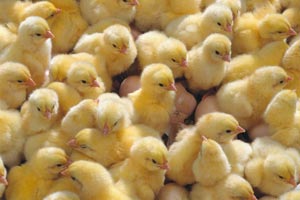Tanks to the genetic selection, new strains of poultry have a higher potential for growth or egg production. Feed efficiency has also been improving to a great extent. The downside is new breeds are less hardy than before.They need a customized management and a good environment to fulfill their potential: By Dr Fanny LEDIEU NewBorn Animal Care, France www. newbornanimalcare.com
Chick needs:
Day old chick from industrial livestock is hatching in equipment, far from its hen. As thermoregulation system is not fully working before severaldays, farmer should provide an environment that will best meet chick requirements.
A good environment for a newborn chick is a room heated at 30°C, 50-60% relative humidity, well oxygenated (CO2<3000ppm) and draft free.
The growth speed is the highest during the first week of life and is decreasing quickly (exponentially decreasing curve). Genetic selection has emphasized this trend. Thus, needs for maintenance and growth have increased during
brooding period, together with genetic selection. Nowadays, weight of broiler chicks is multiplied per 4.5 within the first week As liver function and enzyme systems are not fully working in day-old chicks, specific nutrients should be brought to fulfill specific needs.
Challenges of livestock organization:
As soon as it was hatched, the day-old chick was able to peck. But access to water and feed is commonly delayed in livestock organization from several hours to several days. Hatched chicks need to wait before leaving hatcher. The common hatch window is around 30 to 36 hours. At the exit, chicks are subjected to numerous handling before traveling to their farm.
Many stressful events happen during the first hours of chick life. Hatched chicks need to wait in hatcher. Then, they are graded and sometimes vaccinated before being packed in chick boxes. They endure a transport that can last a long time.
Immune system is naive at hatching and chick needs to develop it. Chick immunity depends on immunoglobulins contained in the egg. But this passive immunity doesn’t always match, as infectious agents can be very different in the broiler farm compared to the parental farm . Furthermore, immunoglobulins can be used for energy purpose if the chick needs it.
Limited resources:
The yolk is a source of nutrients for the day-old chick, giving its autonomy for the first hours of life.
However, these reserves are limited. If chick has no quick access to water and feed, it needs to draw all its reserves, even immunoglobulins that can be used for immune purpose.
The yolk is mainly used within the first two days of life and is totally used during the first 4 or 6 days of life. If that’s not enough, it loses weight, up to 4g per day for a 45g chick.
Fasting postpone the growth of the chick. If it lasts too long, the development of digestive and immune systems are disrupted. Size of the villi or bursa of Fabricius is smaller than usual. At the end, the Production Efficiency Factor (PEF) is negatively impacted.
How to manage a good start?
The epigenetic teach us that environment influences a lot genetic expression. For that reason, farmer needs to focus on feed program as well as quality of the building and management.
To improve performance, objective of the farmer should be to stimulate feed and water intake. They are several solutions to provide feed and water before farm arrival. Semi wet feed and gels are commonly used for this purpose because they bring water and feed at the same time To increase feed intake, the complementary feed should be very attractive. A vivid color, a good smell and a suitable particle size (small pellet, gel) are attractive for the chick.
Feed should be rich in easy digestible energy (glucose, sucrose, MCFA …) in order to save yolk reserves for immune or growth purpose. A blend of nutrients will contribute starting the chick growth. Some nutrients like DHA could be useful to help the chick dealing with stress.
Exploratory behavior isn’t well developed in day-old chicks. For this reason, drinkers and feeders should be numerous at the beginning so all chicks have an easy access to feed and water. They should be ideally located at a maximum distance of 1 meter maximum from each chick.
farmsandfarmer24.com/m

